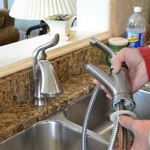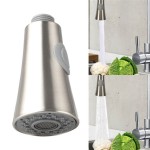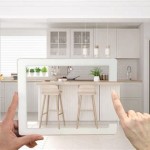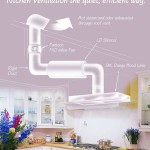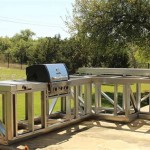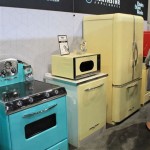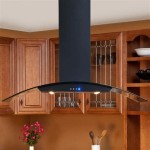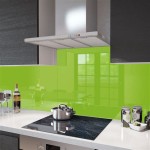Best Colors To Paint Your Kitchen Cabinets
Selecting the optimal color for kitchen cabinets is a pivotal decision in kitchen design. The color substantially influences the overall aesthetic, ambiance, and perceived spaciousness of the kitchen. Several factors warrant consideration when embarking on this decorative undertaking, including the kitchen's existing décor, natural lighting conditions, and the homeowner's personal preferences. This article explores a range of color options suitable for kitchen cabinets, outlining their characteristics and suitability for diverse kitchen styles.
Understanding Color Psychology and its Impact on Kitchen Design
Color psychology, the study of how colors affect human behavior and emotions, plays a crucial role in interior design. In the kitchen, a space often associated with nourishment and social interaction, the chosen color palette can profoundly impact the atmosphere. Warm colors, such as yellows and oranges, are known to stimulate appetite and create a welcoming environment. Cool colors, like blues and greens, can evoke feelings of calmness and tranquility. Neutrals, such as whites and grays, offer versatility and can be paired with a wider range of accent colors.
Before selecting a color, it is crucial to understand how each color contributes to the overall experience of a kitchen. A vibrant, energetic kitchen might benefit from a cheerful yellow or a bold red accent. A more relaxed and inviting space might thrive with soft blues, greens, or warm neutrals.
Popular Color Choices and Their Applications
The color palette available for kitchen cabinets is expansive, offering a multitude of options to suit various tastes and design sensibilities. Some of the most popular choices include white, gray, blue, green, and wood tones. Each color offers unique benefits and can be strategically used to create a desired atmosphere.
White: White cabinets remain a timeless and universally appealing choice. White reflects light, making the kitchen appear brighter and more spacious. It also provides a clean and modern aesthetic. White cabinets are particularly well-suited for smaller kitchens or spaces with limited natural light, as they visually expand the room. They also serve as a versatile backdrop for incorporating colorful accents and design elements.
However, white cabinets require diligent cleaning and maintenance. They are prone to showing dirt, stains, and fingerprints, necessitating regular upkeep to maintain their pristine appearance. Consider the type of white paint, as some are more durable and easier to clean than others.
Gray: Gray has emerged as a sophisticated and versatile alternative to white. It offers a more subtle and contemporary feel, providing a neutral backdrop that complements a variety of design styles. Gray cabinets can range from light, airy shades to deep, dramatic charcoals. Lighter grays, such as dove gray or silver gray, can create a sense of spaciousness and elegance, while darker grays, such as charcoal gray or slate gray, can add depth and sophistication.
Gray pairs well with stainless steel appliances, granite countertops, and a wide range of hardware finishes. It’s a strong choice for individuals seeking a modern or transitional kitchen design. Just as with white, selecting the correct shade is important to avoid a dull or lifeless appearance.
Blue: Blue cabinets can introduce a sense of tranquility and sophistication to the kitchen. Lighter shades of blue, such as robin's egg blue or sky blue, evoke a sense of serenity and airiness. Darker shades of blue, such as navy blue or indigo blue, can create a more dramatic and luxurious feel. Blue cabinets pair well with white countertops, natural wood accents, and brass or gold hardware.
Blue is a good way to add a pop of color without being overwhelming. It’s a refreshing departure from neutral palettes. However, blue might not be the best choice for smaller kitchens, as darker shades can absorb light and make the space appear smaller.
Green: Green cabinets bring a touch of nature and vibrancy to the kitchen. Lighter shades of green, such as sage green or mint green, create a fresh and inviting atmosphere. Deeper shades of green, such as forest green or emerald green, can add a touch of drama and sophistication. Green cabinets pair well with natural wood elements, stone countertops, and copper or bronze hardware.
Green is often associated with health, freshness, and tranquility, making it a suitable choice for kitchens where healthy living is emphasized. It can also be used to create a more rustic or farmhouse-style kitchen. But be mindful of the specific undertone of the green, as some shades can clash with existing décor.
Wood Tones: Wood cabinets offer a warm and inviting aesthetic, bringing a natural element to the kitchen. Different wood species and stains can create a variety of looks, from light and airy to rich and rustic. Light wood tones, such as birch or maple, create a bright and modern feel, while darker wood tones, such as cherry or walnut, add warmth and sophistication.
Wood cabinets are a classic choice that can complement a range of design styles. They pair well with granite or quartz countertops, stainless steel appliances, and a variety of hardware finishes. Wood cabinets require proper sealing and maintenance to protect them from moisture and damage. Also, the specific wood tone should harmonize with other wood elements in the kitchen, such as flooring and furniture.
Factors Influencing Color Selection
Beyond personal preference, several critical factors must be considered when selecting cabinet colors. These factors ensure that the chosen color effectively complements the overall kitchen design and enhances the space's functionality and aesthetic appeal.
Kitchen Size and Layout: The size and layout of the kitchen play a significant role in determining the optimal cabinet color. In smaller kitchens, lighter colors are generally preferred as they reflect light and create a sense of spaciousness. Darker colors can absorb light and make the space appear smaller and more cramped. In larger kitchens, a wider range of colors can be used, including darker shades, as there is sufficient space to accommodate them without overwhelming the room. The layout of the kitchen also influences color selection.
Natural Lighting: The amount of natural light that enters the kitchen is another crucial factor to consider. Kitchens with ample natural light can accommodate a wider range of colors, including darker shades. Kitchens with limited natural light should opt for lighter colors that reflect light and brighten the space. The direction of sunlight also affects how colors appear. North-facing kitchens tend to have cooler light, which can make cool colors appear more muted. South-facing kitchens receive warmer light, which can enhance the vibrancy of warm colors.
Existing Décor and Style: The existing décor and style of the kitchen should also be taken into account. The cabinet color should complement the countertops, flooring, backsplash, appliances, and other design elements in the room. Consider the overall style of the kitchen, whether it is modern, traditional, farmhouse, or transitional. For example, a modern kitchen might benefit from sleek white or gray cabinets, while a farmhouse kitchen might lend itself to warm wood tones or pastel colors.
Countertops and Backsplash: The color and material of the countertops and backsplash can heavily influence the cabinet color choice. If the countertops are already a prominent color or have a strong pattern, choose a cabinet color that complements it without clashing. A neutral countertop offers greater flexibility in cabinet color selection. The backsplash, being close to the cabinets, needs to be considered alongside for a cohesive design.
Testing and Sampling Before Finalizing
It is advisable to test and sample colors before committing to a final decision. Colors can appear differently in different lighting conditions and against different materials. Obtain paint samples and apply them to a small section of the cabinets or a piece of sample wood. Observe the colors at different times of the day and under different lighting conditions to see how they appear. This will help to avoid surprises and ensure that the chosen color is truly the right fit for the kitchen.

How To Choose Kitchen Cabinet Paint Colors

How To Choose Kitchen Cabinet Paint Colors

Popular Kitchen Cabinet Paint Colors West Magnolia Charm

14 Kitchen Cabinet Color Combinations To Try

70 Top Kitchen Paint Colors Best 2024

Dulux Kitchen Paint Colours

Kitchen Cabinet Colors 10 Best For Your Cabinets

The 6 Best Gray Paint Colors For Cabinets

30 Best Kitchen Color Ideas And Combinations 2024

The Best Sherwin Williams White Paint Colors For Cabinets
Related Posts

